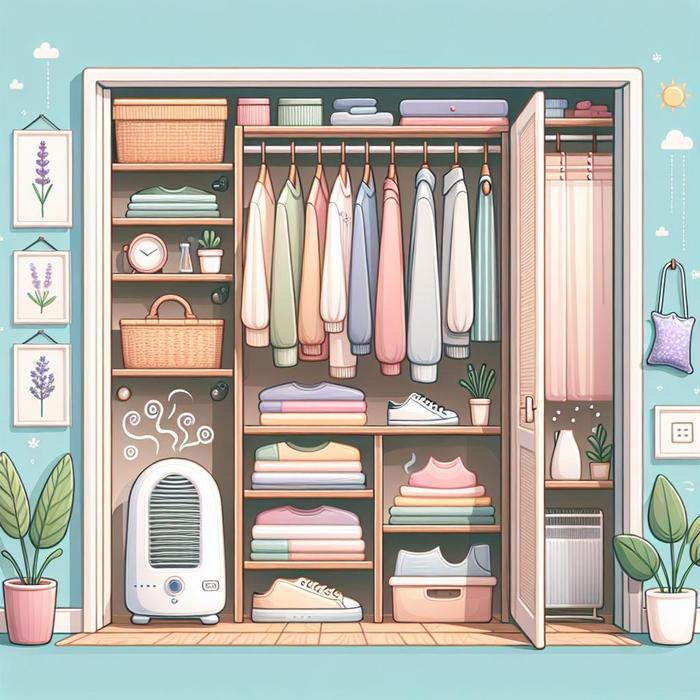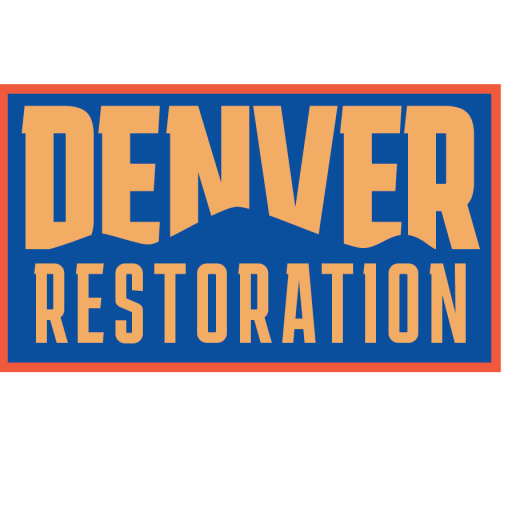Understanding Why Your Closet Smells Musty
The issue of musty-smelling closets is significantly more common than one might imagine and can often leave homeowners, property managers, and business owners questioning – ‘why does my closet smell musty?’. While a number of factors contribute to this problem, it primarily stems from the unwelcome presence of mold and dampness. Molds thrive in damp, dark environments, making your closet, with its limited light and ventilation, the perfect breeding ground.
Significance of Addressing the Issue Effectively
Ignoring a musty smelling closet is not only unpleasant, it may also have serious implications for your health and the structure of your property. Prolonged exposure to mold can lead to respiratory problems and allergic reactions. Structurally, it can cause damage to your property, and especially the items in your closet.
Besides, in the domain of property damage restoration, it’s vital to realize that the problem of a musty smell can significantly impact the overall value of your property. Businesses and homeowners alike should respect the importance of dealing with this issue promptly and efficiently.
Primary Causes of Musty Smelling Closets
Understanding the causes behind your musty closet is the first step to addressing the issue. The main culprits are usually:
– Poor Ventilation: Closets are often poorly ventilated, leading to stagnant air and moisture build-up, which are ideal conditions for mold growth.
– Humidity: High levels of humidity in your home can lead to increased moisture levels in your closet.
– Water Leaks: Hidden water leaks can go unnoticed for a long time, creating the perfect environment for mold.
– Infrequent Cleaning: Dust and dirt accumulation can also contribute to a musty smell.
A good understanding of these factors can help property owners decide on the most effective course of action for dealing with mold and dampness issues in their closets.
Steps to Refreshen Your Musty Closet
Here are some action steps to deal with closet mold effectively:
– Inspection: Regularly inspect your closet for signs of dampness or mold. Look out for dark spots or discoloration on walls and a persistent musty smell.
– Regular Cleaning: Keep your closet clean to minimize dust and avoid creating an environment favorable for mold growth.
– Ventilation: Enhance ventilation in your closet. Leaving the door open, using a fan, or installing a vent can help circulate the air and reduce dampness.
– Absorb Moisture: Use moisture absorbers like silica gel, calcium chloride, or dehumidifiers to reduce humidity levels in your closet.
Professional Help for Mold and Damage Restoration
Persistent mold issues may require the intervention of a professional restoration service. They can effectively assess the extent of the problem, use specific restoration techniques, and ensure the space is clean, dry, and safe again. Furthermore, they are well-versed with health safety measures, and legal compliances, making them the best choice in scenarios where the problem is extensive or recurring.
If you suspect a severe mold issue, you can learn about removing mold from shower caulk or removing mold from drywall for insights into the process and the importance of professional intervention.
In all, keeping a vigilant eye on your closet and maintaining good hygiene can go a long way in ensuring a fresh, clean, and damage-free home.
The Unseen Impact of Mold Damage
The implications of mold damage are not just restricted to its tell-tale musty smell and visible destruction of properties. There are several unseen damages that mold can inflict, both on the property and its inhabitants. The following are some of these hidden damages:
– Structural Integrity: Over time, mold can slowly eat away at the building materials used in your property, such as wood and drywall. These materials are rich in cellulose, which is a food source for mold. This can weaken the structure of your property gradually, leading to significant refurbishing costs in the future.
– Appliances and Furniture: Mold doesn’t discriminate in terms of the surfaces it colonizes. This means your furniture, appliances, and electronics are all potential targets for this persistent issue.
– Aesthetics: Aside from the physical damage, mold also tarnishes the look and feel of your property — a significant concern for businesses that heavily rely on their premises for customer experience.
– Health: One major unseen impact of mold is the myriad of health issues it can cause, ranging from headaches, skin irritation, and sinus congestion to more serious health problems like asthma attacks, especially in people with a mold allergy.
Decoding the Mystery of Mold – What Drives Its Proliferation?
Mold is a naturally occurring organism that plays a crucial role in nature’s recycling system by breaking down dead organic material. It reproduces through tiny spores that are lightweight and can travel through air, water, or even hitch a ride on humans or pets. The problem arises when these spores find their way into our homes and start propagating.
Several factors contribute to the growth and proliferation of mold in indoor environments:
– Moisture: Mold requires moisture to grow. Therefore, areas prone to dampness like kitchens, bathrooms, and yes, closets, are perfect breeding grounds for mold.
– Temperature: A majority of molds grow best at temperatures between 60 and 80 degrees Fahrenheit, which are typically the temperatures maintained in most homes and buildings.
– Food source: Molds feed off organic material, hence materials like wood, paper or fabrics (all abundant in households and commercial properties) can sufficiently feed these fungal intruders.
– Time: Given the right conditions, mold can start growing in as little as 24 hours.
Understanding these factors helps us recognize the necessity of preventive measures to ward off mold infestation in our homes and workplaces.
Preventive Measures to Guard Against Mold Infestation
Now that we understand the causes and effects of mold, it’s time to tackle the question – how can we prevent it? Here are some key preventive measures:
– Controlling Humidity: Keeping a regular check on indoor humidity levels and ensuring they are not too high can help in preventing mold growth. The Environmental Protection Agency (EPA) recommends maintaining indoor humidity levels between 30% and 60%.
– Leak Resolution: Regular inspection for leakages in roofs, walls, and plumbing fixtures is crucial. Early identification and repair can not only save you costly repairs but can also prevent conditions conducive for mold growth.
– Regular Cleaning: Cleaning surfaces regularly and keeping them dry can limit the chances of the spores finding their breeding grounds.
– Proper Ventilation: Good ventilation in the home has a significant role to play in preventing mold. Enhancing airflow can help to reduce dampness and keep your home dry and mold-free.
The Role of Restoration Experts in Safeguarding Your Property
Tackling mold can sometimes go beyond a DIY project and may require expert intervention. Professional restoration experts possess the knowledge and tools to handle complex mold issues that may not always be visible or accessible to property owners. Here are some reasons why professional help should be sought in such scenarios:
– Assessment & Inspection: Restoration professionals are trained to detect hidden molds and the water sources fueling them.
– Containment: Professionals can prevent the spread of mold to other parts of the property during remediation by using advanced equipment and techniques.
– Removal & Cleanup: Experts have the tools and training to thoroughly clean, decontaminate, and sanitize the affected area, thereby ensuring the safety and protection of inhabitants.
– Restoration: Restoration experts can restore your property to its pre-mold condition, thereby alleviating the stress and anxiety the mold issue might have caused.
For complex mold scenarios, property and business owners can refer to the expert advice provided in how to remove mold from basement walls or find out how to remove mold from the attic.
Crisis Management – How to Respond to Large-Scale Mold Infestation
If your property is hit by a serious mold infestation, it’s crucial to have a crisis management plan in place. Restoration experts can mitigate the damage and steer the recovery process in such scenarios. However, it’s essential to remain proactive and keep informed about the recovery process to ensure effective results.
In conclusion, tackling a musty-smelling closet can be simple or complex, depending on the severity of the mold. However, understanding the issue’s root triggers, possible preventive measures, and when to seek professional help can make the process less daunting. By being vigilant and proactive, homeowners and business owners can ensure their spaces are clean, safe, and at their optimum value.

